A Fake Brownstone in Brooklyn Hides a Secret Subway Ventilator
This facade at 58 Joralemon Street in Brooklyn Heights isn't what it seems!


What stands out about the Lafayette Theater Townhouses, middle-income affordable housing in Central Harlem, is that they, quite frankly, don’t stand out.
Constructed on vacant City-owned properties in the early 2000s, they are infill buildings interspersed among older structures, mostly nineteenth century brownstones and other rowhouses. The project consisted of nine separate groupings, located mostly between W. 134th Street, Lenox Avenue (aka Malcolm X Boulevard), W. 129th Street, and Seventh Avenue (aka Adam Clayton Powell, Jr. Boulevard).
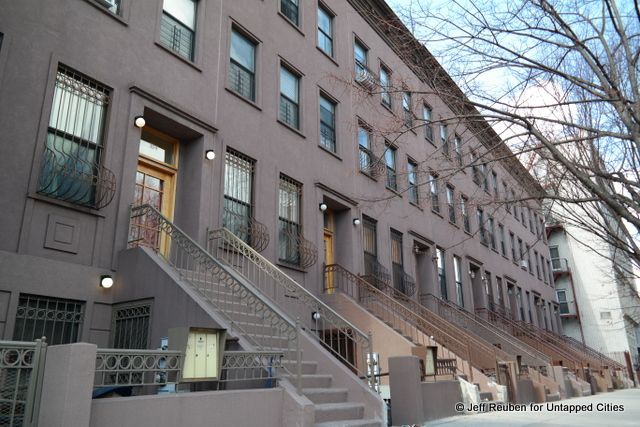
Row of seven Lafayette Theater Townhouses on W. 134th Street
The longest cluster is a row of seven townhouses, while the shortest consists of a single townhouse tucked in between two older buildings. They were built on old houses lots, ranging from 15 to 25 feet wide.
In total, the project consisted of 27 new brownstones containing a total of 73 dwelling units. Each building includes four levels, with two or three dwelling units per building.
They were developed with public subsidies through the City’s Partnership New Homes Program, in which the buildings were sold to individuals meeting middle income requirements.
They were designed in a neo-traditional style, with stoops, brownstone facing, and cornices. But, unlike many other similar developments in Harlem and elsewhere in the City, what distinguishes them is an absence of visible contemporary features. There are no air conditioner grilles, no Fedders covers, no metal stoops.
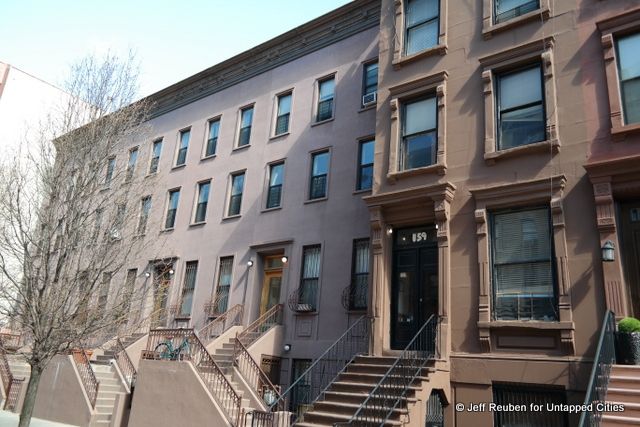
Lafayette Theater Townhouses with dog leg stoops on W. 129th Street
The Lafayette Theater Townhouses also broke the affordable housing mold in another way. These were not built from one cookie-cutter blueprint. For example, while most have flat front facades, three have bay windows. Similarly, although most have traditional stoops, four of the houses on W. 134th Street have dog leg stoops.
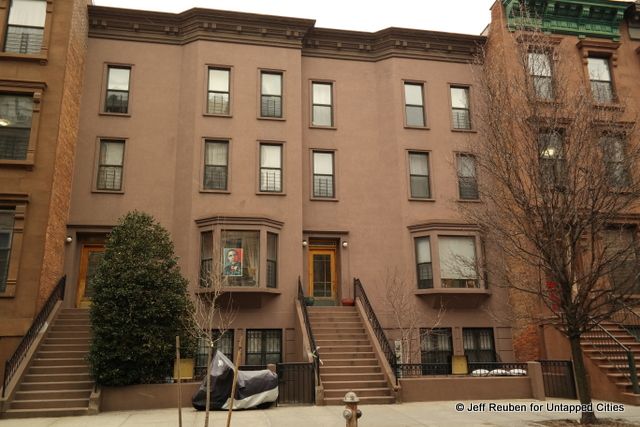
Lafayette Theater Townhouses with bay windows on W. 129th Street
To be sure, there are differences with their older neighbors. The facades, built with contemporary materials, are smoother in appearance than a typical weathered brownstone (the original brownstone quarries used for most historic brownstones in Harlem are no longer active) and the framing around the windows is simpler. But, many historic preservationists argue that new buildings in areas with an existing building vocabulary should be contextual but should not be perfect duplicates indistinguishable from older buildings. On that score, these buildings seem to have struck the balance well.
The area is not a City-designated historic district and does not require Landmarks Preservation Commission approval of building design, but since the project involved public funding it was subject to review by the State Historic Preservation Office which insisted on a contextual design.
In an email interview with Untapped Cities, the project’s Harlem-based architect, Roberta Washington, FAIA, explained that “the design objective was to provide a new homeowner with well-laid out, functional living spaces and at the same time provide their neighbors with a block-friendly new addition which maintained the brownstone character of their block.”
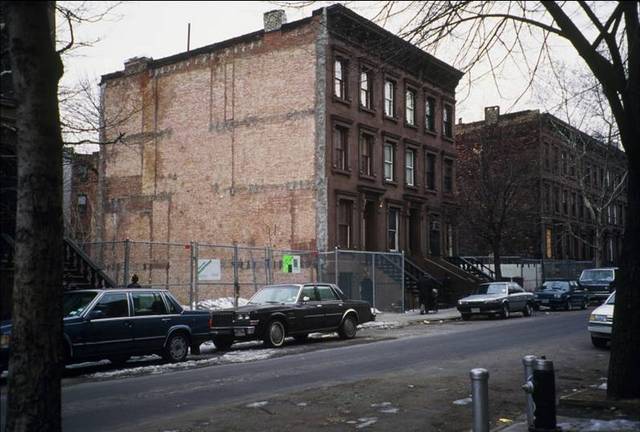
“Before” View of Lafayette Theater Townhouses Site, W. 132nd Street. Photo courtesy of Roberta Washington
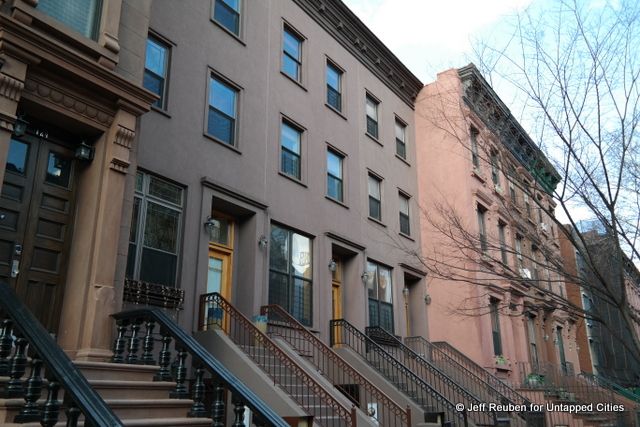
“After” View of the Same Site on W. 132nd Street
What is the take away for other infill new construction projects? Washington, who has also served as a member of the Landmarks Preservation Commission since 2007, says that “whether designs are contemporary or based on historic models, I believe the height and relatable window and cornice scale add most to contextuality.”
Befitting such an incognito project, its name is a bit of a misnomer. None of the Lafayette Theater Townhouses were built at the old Lafayette Theater site.
The theater, an important venue in Harlem’s cultural history, was located nearby at Seventh Avenue and W. 132nd Street. It was a prominent building and the surroundings blocks were known as the Lafayette Theater area. After years of alterations and deterioration, the theater was demolished in 2013 and a new 8-story apartment building, with a contemporary design, is now nearing completion on the site.
To find the Lafayette Theater Townhouses, go to Central Harlem and look for the buildings that are hiding in plain sight.
Check out more Untapped Cities coverage of Harlem.
Subscribe to our newsletter